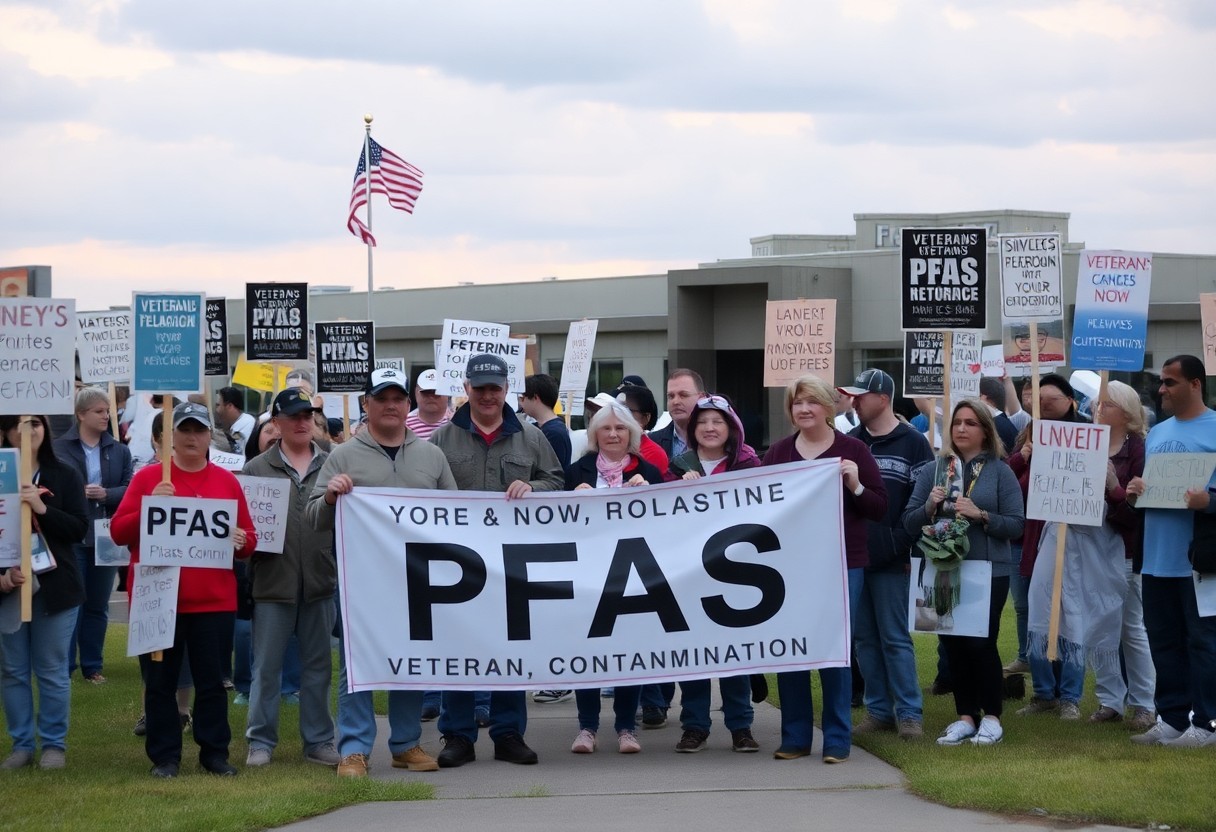Most water treatment facilities face significant challenges when it comes to eliminating per- and polyfluoroalkyl substances (PFAS) from your drinking water. These persistent chemicals are notorious for resisting conventional treatment methods, making it difficult to achieve complete removal. As a result, you may still be exposed to potential health risks, including various diseases linked to PFAS. Understanding the limitations of current treatment technologies is important for you to be informed about the safety of your water supply and what can be done to improve it.
Understanding PFAS
To comprehend the challenges in eliminating PFAS, you need to understand what these substances are. PFAS, or per- and polyfluoroalkyl substances, are a group of synthetic chemicals that have been widely used in various industries for their water- and grease-resistant properties. They are often found in consumer products, such as non-stick cookware, water-repellent clothing, and food packaging, making them prevalent in your environment.
Definition and Origins
PFAS are a large family of over 4,700 chemical compounds that include notable substances like PFOS and PFOA. Developed in the 1940s, these chemicals were designed for their unique ability to repel water and grease, leading to their widespread applications in various industries, including textiles, firefighting foam, and food packaging.
Health Impacts of PFAS
Origins of PFAS in your environment raise significant health concerns. Studies indicate that exposure to these substances may lead to serious health issues, including increased cholesterol levels, thyroid disorders, and even certain types of cancer. Even low levels of PFAS in your blood can affect immune response and hinder the effectiveness of vaccines, posing risks that are particularly alarming for vulnerable populations, such as children and pregnant women. Therefore, understanding their health impacts is vital for you and your community.
Water Treatment Processes
While water treatment facilities employ various processes to purify water, eliminating PFAS completely remains a challenge. Traditional methods often fall short against these persistent contaminants, requiring innovative approaches for effective removal. Understanding these processes is important for recognizing the limits and potentials of water treatment technology.
Conventional Treatment Methods
Beside relying on conventional treatment methods like coagulation and filtration, these approaches often lack efficiency in tackling PFAS. Their effectiveness can be hindered by the chemical’s unique properties, such as strong carbon-fluorine bonds, which resist breakdown.
Advanced Treatment Technologies
Among the advanced treatment technologies that have emerged recently, some show promise in effectively targeting PFAS removal. Through innovative engineering solutions, these systems aim to combat the limitations of traditional methods. Some of the key technologies include:
Advanced Treatment Technologies
| Technology | Description |
|---|---|
| Reverse Osmosis | Removes a wide range of contaminants through semipermeable membranes. |
| Granular Activated Carbon | Adsorbs PFAS effectively from water, but may require frequent regeneration. |
| Ion Exchange | Targets specific PFAS compounds but can be limited in capacity. |
For instance, integrating Granular Activated Carbon with additional purification methods can enhance the overall efficacy of water treatment systems. By combining technologies, facilities can better tackle PFAS contamination. Other notable advanced methods include:
Additional Advanced Technologies
| Technology | Description |
|---|---|
| Electrochemical Processes | Utilizes electrical currents to degrade PFAS in water. |
| Hydrothermal Treatment | Involves high temperature and pressure to break down contaminants. |
| Membrane Filtration | Offers high precision in separating PFAS from water. |
By embracing these advanced approaches, you can play a role in advocating for better water treatment technologies. Each method presents unique advantages and varying levels of success in PFAS removal, highlighting the need for continuous research and development in this field.
Challenges in PFAS Removal
Even though water treatment facilities employ various methods to tackle contaminants, the challenges of completely eliminating PFAS are significant. These substances resist breakdown and can persist in the environment, complicating the efforts of treatment systems designed to filter out harmful pollutants. As regulations tighten and public awareness increases, the burden on these facilities to manage PFAS contamination effectively continues to grow.
Chemical Stability of PFAS
To understand the difficulty in removing PFAS, it is vital to recognize their inherent chemical stability. These compounds contain strong carbon-fluorine bonds that make them resistant to degradation, which allows them to accumulate in the environment and in living organisms, posing long-term health risks.
Limitations of Treatment Facilities
To effectively address PFAS contamination, water treatment facilities face specific limitations that hinder their efficacy. Many existing systems were not designed to target these persistent chemicals, leaving gaps in treatment protocols.
Plus, the challenge lies in the infrastructure and technology at treatment facilities, which may not be equipped to handle PFAS efficiently. Advanced technologies like granular activated carbon (GAC) and ion exchange can be expensive to implement and maintain. Furthermore, some facilities may lack the necessary resources or expertise, leading to insufficient removal rates. Ultimately, without significant investment in upgrades and training, your local water treatment facility may struggle to meet PFAS removal standards effectively.
Regulatory Landscape
Keep in mind that the regulatory landscape surrounding PFAS is complex and evolving. Various local, state, and federal agencies are working to develop consistent guidelines to manage and reduce these contaminants. However, the lack of uniform standards can lead to significant gaps in the efficacy of interventions at water treatment facilities, making it challenging to achieve complete elimination of PFAS from drinking water.
Current Regulations and Standards
Current regulations regarding PFAS are still in development stages, with some states implementing their own limits while others follow federal guidelines. You may find that these standards vary significantly, causing confusion and challenges for water treatment facilities striving to meet inadequate or inconsistent requirements. The Environmental Protection Agency (EPA) is working on establishing more definitive limits, but widespread adoption of these measures remains pending.
Future Regulatory Directions
At this juncture, the future of PFAS regulation seems to be leaning towards stricter standards and increased monitoring. You can expect more comprehensive legislation aimed at limiting the production and usage of PFAS compounds, as well as stricter guidelines for treatment facilities to adhere to. This shift aims to improve public health outcomes and better protect your water sources.
Also, growing public awareness and advocacy are likely to push for legislation that emphasizes the need for better testing and reporting mechanisms. Your engagement in community discussions can influence local policies, prompting more rigorous controls on PFAS discharges. With increasing pressure from environmental groups and potential legal implications for non-compliance, the regulatory environment will likely evolve swiftly, aiming for greater accountability and transparency in water treatment practices.
Case Studies
Once again, examining real-world examples sheds light on why water treatment facilities fail to completely eliminate PFAS contaminants. Notable case studies include:
- Newark, NJ: Utilized advanced filtration and reported a 90% reduction in PFAS, but trace amounts lingered.
- Hinsdale, IL: Implemented granular activated carbon and managed to decrease PFAS by 75%, yet challenges remain.
- Westfield, MA: A pilot study achieved a 95% removal rate, but operational costs soared, limiting sustainable use.
Successful Treatment Implementations
For several water treatment facilities, innovative technologies have proven effective against PFAS. Techniques like reverse osmosis and advanced oxidation processes have led to significant reductions in contamination levels, showcasing the potential for successful adaptations in different contexts.
Struggling Facilities and Lessons Learned
By analyzing struggling facilities, you can gain insights into common pitfalls in treating PFAS. These facilities often face issues with aging infrastructure, insufficient funding, and lacking technology, contributing to only partial treatment success.
Even in cases where some facilities have attempted to combat PFAS contamination, the results can be disappointing due to various factors. The presence of multiple PFAS compounds, varying site conditions, and outdated technologies lead to incomplete removal. Facilities often confront budget constraints, limiting their ability to upgrade or implement advanced treatment methods. Learning from these struggles highlights the importance of investing in modern equipment and ensuring ongoing training for staff to stay ahead of the challenges posed by per- and polyfluoroalkyl substances.

Innovations and Research
Your understanding of PFAS elimination is enhanced by ongoing innovations and research in the field. Scientists and engineers are actively developing new treatments and enhancement techniques aimed at effectively addressing the limitations of current water treatment facilities. By staying informed about these advancements, you can better appreciate the complexity of the challenge and the potential solutions on the horizon.
Emerging Technologies
To tackle PFAS contamination effectively, researchers are exploring emerging technologies such as advanced oxidation processes, adsorption media, and membrane filtration. These innovative solutions aim to break down PFAS compounds at a molecular level, providing hope for more effective water treatment methods in the near future.
Collaborative Efforts in the Field
Between various stakeholders, including government agencies, academic institutions, and private sector companies, collaborative efforts are being made to tackle PFAS contamination. These partnerships facilitate knowledge sharing, resource allocation, and the development of comprehensive strategies to mitigate PFAS pollution.
At the forefront of addressing PFAS challenges are partnerships characterized by multidisciplinary collaboration. This includes cooperation among scientists, engineers, and policymakers to expedite research and implementation of effective water treatment solutions. By pooling expertise and resources, stakeholders can strengthen their combined efforts, ultimately leading to the development of more robust regulations and innovative technologies aimed at eliminating PFAS from water systems. Engaging in these collaborative initiatives not only enhances understanding but also promotes a collective approach to tackle this pressing environmental issue.
To wrap up
On the whole, understanding why water treatment facilities struggle to eliminate PFAS completely requires you to consider their unique chemical properties and persistence in the environment. These substances resist conventional treatment methods and can often withstand high temperatures and chemical degradation. As you explore strategies to address this issue, be aware that advanced technologies may reduce PFAS levels, but your community may still face challenges related to cost and infrastructure. By staying informed, you can contribute to discussions on improving water quality and advocating for effective solutions.





















